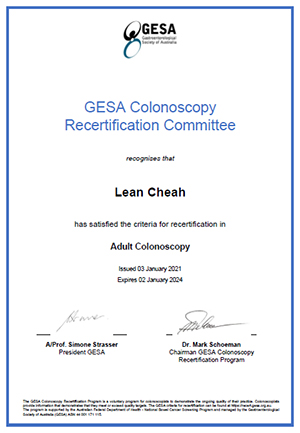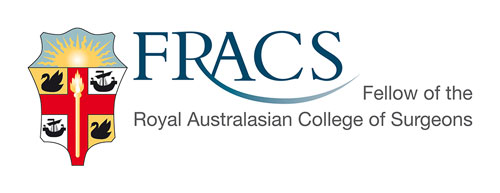HAEMORRHOIDS
What are haemorrhoids?
Haemorrhoids or piles are a common problem. Haemorrhoid forms when the veins in the soft tissue in the anal canal and part of the rectum above it becomes dilated. This causes a swelling that can sometimes bulge out of the back passage(prolapsing haemorrhoids)
Haemorrhoids may cause symptoms such as bleeding, swellling/lumps in anal canal, mucus discharge, itching and pain(especially if thrombosed)
What treatment options are available?
Conservative treatment – high fibre diet, avoiding straining(keeping stools soft). Using haemorrhoid cream/ointment/suppositories(eg Scheriproct, Proctosedyl, Rectinol) – these usually contain a combination of steroids and local anaesthetic.
Injection of haemorrhoids with sclerosant(5% phenol in almond oil) – there are risks of causing severe inflammation outside the rectum(phenol is rather toxic!). Also not that successful for larger haemorrhoids.
Banding of haemorrhoids – there are many ways of doing these. It is important to band above the dentate line of the anal canal to reduce the pain – in fact this is often painless. (The author prefers to band several times in an imaginary vertical line along the branches of the rectal vessels contributing to the haemorrhoids – this is so that the supplying blood vessel is thrombosed and this also helps pull up small prolapsing anal cushions to a degree. This combines the principles of placating the tissue from stapled haemorrhoidectomy and ligation of the vessels without actually needing invasive surgery) Risks – bleeding, recurrence of haemorrhoids in other areas not banded, discomfort/feeling of needing to go to the toilet, pain – if large prolapsing haemorrhoid and some component extends below the dentate line)
Surgery – there are many different techniques available. Haemorrhoidectomy – open or closed technique. Haemorrhoidpexy. Stapled techniques. Coagulation diathermy can be used(as can infrared laser photocoagulation, cryosurgery, harmonic scalpel) Ligation of haemorrhoid artery. Or a combination of the above. (The author prefers surgery only as the last resort - after conservative management or banding has failed. The aim being to excise the haemorrhoids and any associated skin tags with minimal trauma to surrounding tissue to reduce postop pain. Usually with coagulation diathermy, closure of the wound, ligation of the pedicle of the haemorrhoids(to ligate the supplying blood vessel - branches of the superior rectal arteries) and pexy(pulling up) of the mucosal cushions. A Spongostan pack is also usually inserted at the end of the procedure. Generally surgery is indicated for large 4th degree haemorrhoids or in cases where banding has failed. If performed in the Minor Operating theatre with only local anaesthesia - only one haemorrhoid with its associated skin tag is excised at a time and more plication/pexy is performed in that area) Risks of surgery include – pain , urinary retention, bleeding, anal stricture(if too much intervening tissue is taken, anal fissure, abscess, remaining skin/tissue between the areas excised may swell and feel like lumps after the op. Pain postop can be severe in some people. It is important to keep one's stools soft during the healing process.
LP
Dr LP Cheah is an expert in treating haemorrhoids. As an endoscopist - he gets referred a lot patients rectal bleeding from haemorrhoids. It is better to have the haemorrhoids banded while it is smaller. Unfortunately a proportion of his patients have already had colonoscopies elsewhere where the haemorrhoids are not banded/treated - please check that your endoscopist will deal with your haemorrhoids if found during the endoscopy.
What are haemorrhoids?
Haemorrhoids or piles are a common problem. Haemorrhoid forms when the veins in the soft tissue in the anal canal and part of the rectum above it becomes dilated. This causes a swelling that can sometimes bulge out of the back passage(prolapsing haemorrhoids)
Haemorrhoids may cause symptoms such as bleeding, swellling/lumps in anal canal, mucus discharge, itching and pain(especially if thrombosed)
What treatment options are available?
Conservative treatment – high fibre diet, avoiding straining(keeping stools soft). Using haemorrhoid cream/ointment/suppositories(eg Scheriproct, Proctosedyl, Rectinol) – these usually contain a combination of steroids and local anaesthetic.
Injection of haemorrhoids with sclerosant(5% phenol in almond oil) – there are risks of causing severe inflammation outside the rectum(phenol is rather toxic!). Also not that successful for larger haemorrhoids.
Banding of haemorrhoids – there are many ways of doing these. It is important to band above the dentate line of the anal canal to reduce the pain – in fact this is often painless. (The author prefers to band several times in an imaginary vertical line along the branches of the rectal vessels contributing to the haemorrhoids – this is so that the supplying blood vessel is thrombosed and this also helps pull up small prolapsing anal cushions to a degree. This combines the principles of placating the tissue from stapled haemorrhoidectomy and ligation of the vessels without actually needing invasive surgery) Risks – bleeding, recurrence of haemorrhoids in other areas not banded, discomfort/feeling of needing to go to the toilet, pain – if large prolapsing haemorrhoid and some component extends below the dentate line)
Surgery – there are many different techniques available. Haemorrhoidectomy – open or closed technique. Haemorrhoidpexy. Stapled techniques. Coagulation diathermy can be used(as can infrared laser photocoagulation, cryosurgery, harmonic scalpel) Ligation of haemorrhoid artery. Or a combination of the above. (The author prefers surgery only as the last resort - after conservative management or banding has failed. The aim being to excise the haemorrhoids and any associated skin tags with minimal trauma to surrounding tissue to reduce postop pain. Usually with coagulation diathermy, closure of the wound, ligation of the pedicle of the haemorrhoids(to ligate the supplying blood vessel - branches of the superior rectal arteries) and pexy(pulling up) of the mucosal cushions. A Spongostan pack is also usually inserted at the end of the procedure. Generally surgery is indicated for large 4th degree haemorrhoids or in cases where banding has failed. If performed in the Minor Operating theatre with only local anaesthesia - only one haemorrhoid with its associated skin tag is excised at a time and more plication/pexy is performed in that area) Risks of surgery include – pain , urinary retention, bleeding, anal stricture(if too much intervening tissue is taken, anal fissure, abscess, remaining skin/tissue between the areas excised may swell and feel like lumps after the op. Pain postop can be severe in some people. It is important to keep one's stools soft during the healing process.
Dr LP Cheah is an expert in treating haemorrhoids. As an endoscopist - he gets referred a lot of patients that are rectal bleeding from haemorrhoids. It is better to have the haemorrhoids banded while it is smaller. Unfortunately a proportion of his patients have already had colonoscopies elsewhere where the haemorrhoids are not banded/treated - please check that your endoscopist will deal with your haemorrhoids if found during the endoscopy.



